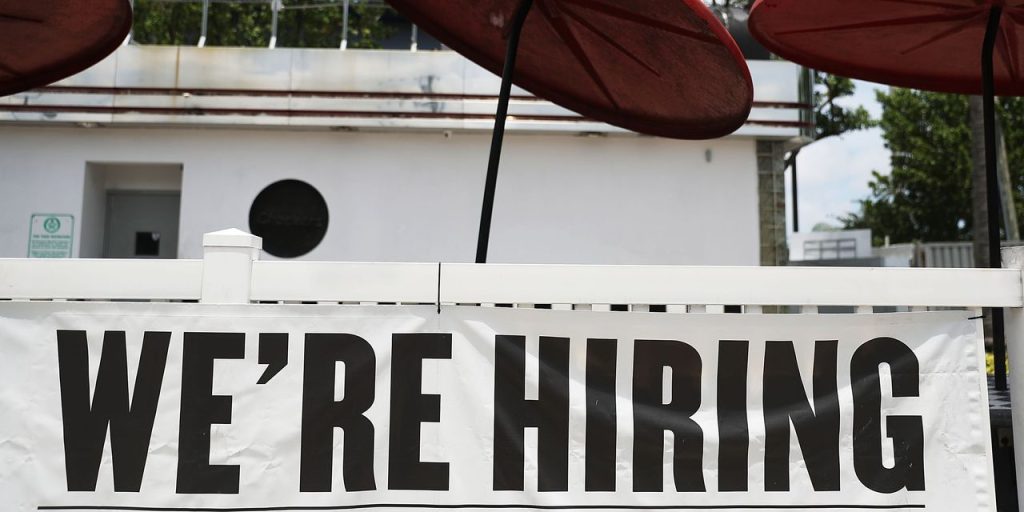The numbers: The U.S. added a robust 236,000 new jobs in March, defying the Federal Reserve’s hopes for a big slowdown in hiring as the central bank struggles to tame inflation. The consensus economist forecast called for a nonfarm-payrolls expansion of 238,000.
The solid increase in employment last month followed a revised 326,000 gain in February and a gain of 472,000 in January.
While the increase in hiring was the smallest monthly rise in more than two years, the number of jobs created last month was much greater than is typical.
The unemployment rate, meanwhile, slipped to 3.5% from 3.6% as more people searched for and found work. That’s another sign of labor-market vigor.
There was some good news in the report for the Fed, though.
Wage growth continued to moderate closer to level the Fed would prefer. Hourly wages increased a mild 0.3% last month, the government said Friday.
The increase in pay over the past year also slowed again to a nearly two-year low of 4.2% from 4.6% in February.
What’s more, the share of people working or looking for work rose a tick to 62.6%. That’s the highest labor-force participation rate since February 2020, the last month before the pandemic’s onset.
When more people look for work, companies don’t have to compete as hard for workers via higher pay.
Emerging evidence of slack in a muscular U.S. labor market could encourage the Fed to take a breather after a rapid series of interest-rate increases.
Still, the U.S. has added a whopping 1 million–plus new jobs in the first three months of the year. The labor market is not cooling off as much as the Fed would like.
“ The Black unemployment rate fell to 5% last month, the lowest level since records began being kept in the early 1970s. ”
Stock-index futures rallied after the report, though the stock market itself is officially closed due to the Good Friday holiday.
See: Why Good Friday complicates how stock-market traders will digest March jobs report
Key details: About one-third of the new jobs created last month — 72,000 — were at service-sector companies such as bars and restaurants whose employment still has not returned to prepandemic levels.
Americans are going out to eat a lot and spending relatively more on services than on goods.
Government employment increased by 47,000. Hiring also rose at professional businesses and in healthcare. Retailers cut 15,000 jobs.
Employment fell slightly in manufacturing and construction, or goods-producing industries, which are under more pressure from rising interest rates.
The strong labor market has benefited all groups, but especially Black Americans. The Black unemployment rate fell to 5% last month, the lowest level since records began being kept in the early 1970s.
Big picture: The ongoing tightness in the labor market could inflame inflation and even push the Fed to raise interest rates more than currently forecast to try to get prices under control.
Higher borrowing costs reduce inflation by slowing the economy, but most Fed rate-hike cycles since World War II have been followed by recession.
On the flip side, the U.S. economy is starting to show more signs of deterioration due to the series of rapid Fed interest-rate increases since last year.
Manufacturers have cut production and are arguably already in recession and the much larger service side of the economy is under more stress lately.
If these trends continue the economy — and inflation — are bound to slow.
The U.S. is still growing for now, however, and the labor market remains an oasis of strength.
Low unemployment and rising wages have allowed Americans to keep spending. And so far they’ve keep the economy out of a widely predicted recession.
Looking ahead: “The U.S. labor market is losing some momentum, but remains far too vibrant for the Fed to pause [its rate-hike campaign] in May,” said senior economist Sal Guatieri at BMO Capital Markets
“Although job growth is gradually slowing, it remains too strong for the Federal Reserve,” said Sal Guatieri of PNC Financial Services.
See: Traders see little chance interest rates will end up where Fed thinks in 2023
Market reaction: Futures contracts on the Dow Jones Industrial Average
YM00,
rose 64 points, or 0.2%, to 33,723. S&P 500 futures
ES00,
gained 9.75 points, or 0.2%, to 4,141.75. Stock trading resumes again on Monday.
The yield on the 10-year Treasury
TMUBMUSD10Y,
jumped to 3.36%.
MarketWatch personal finance: U.S. economy added 236,000 jobs in March. Is this your last chance to jump ship?
Read the full article here













